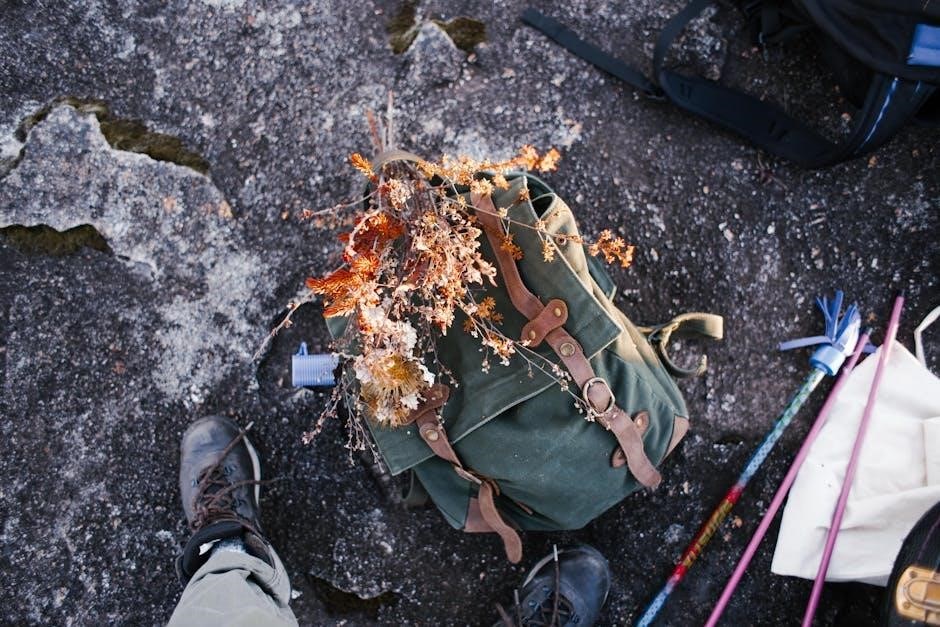Hiking offers an incredible way to connect with nature, but proper preparation is key․ The 10 essentials ensure a safe and enjoyable experience, especially on perfect weather days․
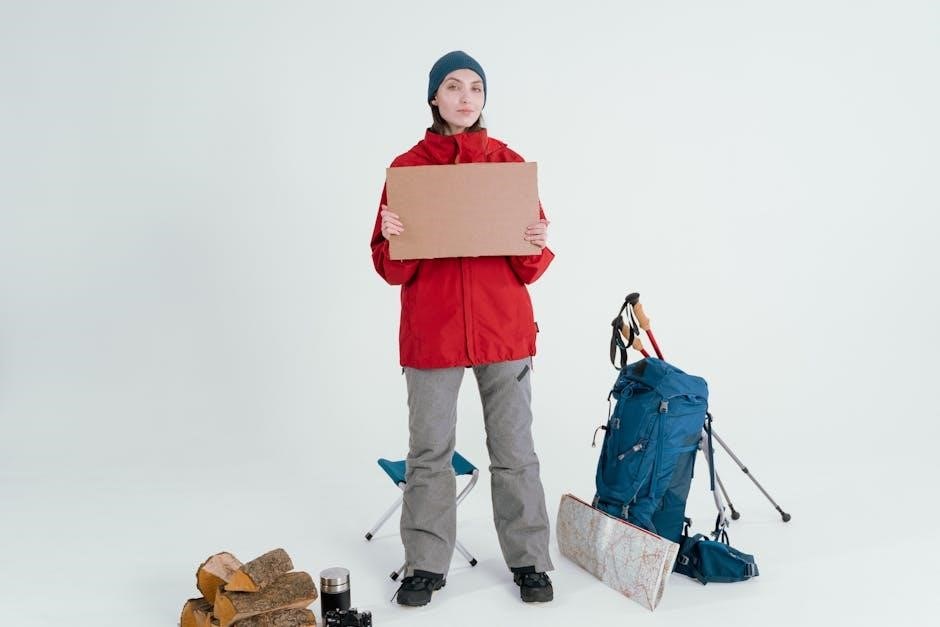
Navigation Tools
Navigation tools are crucial for hiking safety, helping hikers stay on track․ Search and rescue officials remind hikers to carry a map, compass, and GPS for emergencies․
Importance of Navigation in Hiking
Navigation is crucial for a safe and enjoyable hike, especially in unfamiliar territories․ With perfect weather conditions, trails can still be misleading, making it easy to lose track․ Search and rescue officials remind hikers to take extra precautions, emphasizing the need for reliable navigation tools․ A map and compass are essential, even with modern GPS technology, as they provide a backup in case of device failure․ Proper navigation ensures hikers stay on course, avoid risks, and return safely, making it a cornerstone of hiking safety․
Types of Navigation Tools
Essential navigation tools include a detailed topographic map, a compass, and a GPS device or app․ These tools help hikers stay oriented and locate trails, especially in unfamiliar areas․ A map provides visual terrain representation, while a compass offers precise direction-finding; GPS devices and apps are modern alternatives, offering real-time location tracking․ Additionally, many hikers carry extra batteries and a backup power source․ Burke County and Portland-area trails often require these tools due to varying terrain and potential weather changes, ensuring hikers can navigate safely and efficiently․
How to Use a Map and Compass
Using a map and compass is a foundational skill for navigation․ Start by identifying key symbols and markings on the map, then orient it to match your surroundings using the compass․ Align the compass needle with magnetic north, rotate the dial to set your desired bearing, and follow the direction of travel arrow․ Use landmarks to cross-check your position and stay on course․ This method ensures accuracy, especially in remote areas without GPS reliability, making it a crucial skill for safe and confident hiking in places like the Columbia River Gorge trails․
Water and Hydration
Staying hydrated is crucial for a safe and enjoyable hike, especially on perfect weather days․ Proper hydration ensures energy and prevents dehydration-related risks during outdoor adventures․
Why Staying Hydrated is Crucial
Staying hydrated is essential for maintaining energy levels and preventing dehydration, which can lead to fatigue, dizziness, and more severe health issues․ Proper hydration ensures bodily functions operate efficiently, even in challenging terrain․ With perfect weather conditions, hikers may underestimate fluid loss, but dehydration can quickly become dangerous․ Search and rescue officials remind hikers to prioritize water intake to stay safe and alert during their adventures․ Hydration is a cornerstone of a safe and enjoyable hiking experience, regardless of the weather or trail difficulty․
Best Water Containers for Hiking
Choosing the right water container is vital for staying hydrated on the trail․ Hydration bladders are ideal for easy sipping, while lightweight water bottles offer durability․ Collapsible containers save space and are perfect for varying water needs․ Insulated options keep water cool in hot weather, enhancing comfort․ Consider a container with a built-in filtration system for added convenience․ Selecting the right size and type ensures you carry enough water without unnecessary weight․ Proper hydration is crucial, especially in perfect hiking conditions, where dehydration can still pose risks․ Always prioritize a reliable water container for your adventures․
Water Purification Methods
Ensuring safe drinking water is critical on the trail․ Common purification methods include water filters, purification tablets, and UV light purifiers․ Filters remove bacteria and improve taste, while tablets are lightweight and cost-effective․ UV purifiers offer a chemical-free solution, killing pathogens instantly․ Boiling water is also reliable, requiring just a heat source․ Each method has its advantages, and hikers should choose based on their specific needs and the water quality they expect to encounter․ Always carry a purification method to avoid waterborne illnesses and stay hydrated safely․
Extra Clothing
Packing extra clothing is vital for adapting to changing weather conditions․ Bring moisture-wicking base layers, insulating mid-layers, and a waterproof jacket to stay comfortable and protected․
Layering for Different Weather Conditions
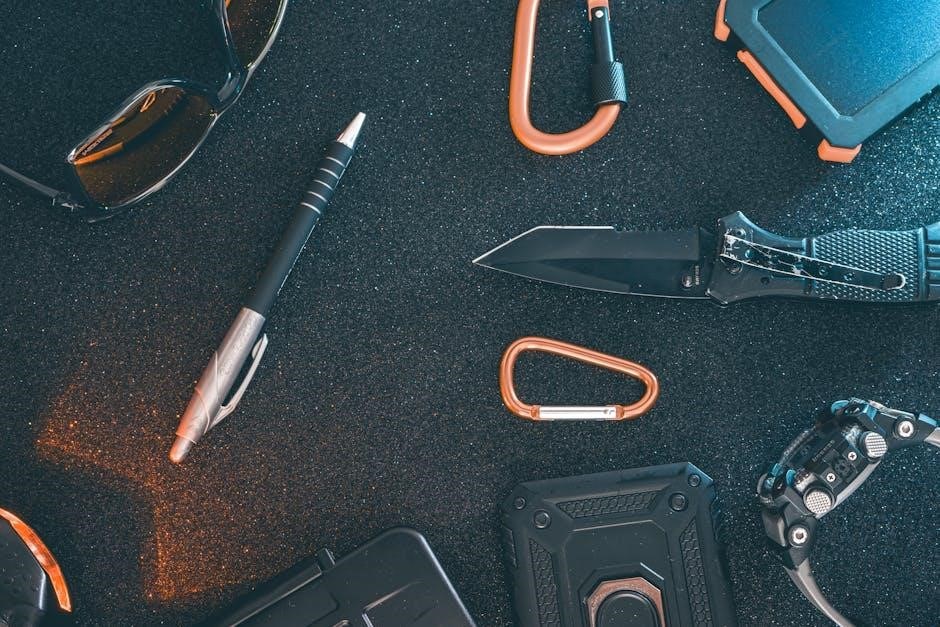
Layering clothing is essential for adapting to varying weather conditions during hikes․ Start with a breathable base layer to wick moisture, add an insulating mid-layer for cold conditions, and finish with a waterproof outer layer for rain or wind․ This system allows you to adjust your clothing as temperatures fluctuate, ensuring comfort and preventing overheating․ Proper layering also helps manage moisture, reducing the risk of hypothermia in cool or wet environments․ Always pack extra layers to stay prepared for unpredictable weather changes on the trail․
Choosing the Right Hiking Apparel
Selecting appropriate hiking apparel is crucial for comfort and safety․ Opt for moisture-wicking, breathable fabrics like merino wool or synthetic materials to keep you dry and comfortable․ Consider durable, weather-resistant outerwear with UPF protection to shield against sun and rain․ Choose pants and shirts with built-in stretch for mobility․ Avoid cotton as it retains moisture, increasing the risk of chafing and hypothermia․ Prioritize layers that are lightweight, quick-drying, and versatile for varying conditions․ Proper footwear with sturdy soles and ankle support is also essential for uneven terrain․
Packing Essentials for Changing Weather
Always pack layers, including a waterproof jacket or poncho, to adapt to unexpected rain or wind․ Bring a warm hat, gloves, and a lightweight insulated jacket for colder conditions․ Include gaiters and waterproof pants to protect against wet terrain․ Don’t forget extra socks, a quick-drying base layer, and a change of clothes stored in a waterproof bag․ A lightweight rain cover for your backpack and a breathable fleece can enhance versatility․ These items ensure you’re prepared for fluctuating temperatures and weather conditions while hiking․
First Aid Kit
A first aid kit is essential for treating minor injuries and preventing infections․ Include bandages, antiseptic wipes, pain relievers, and supplies for blisters and cuts․
Basic Items Every First Aid Kit Should Have
A well-stocked first aid kit is crucial for addressing minor injuries and preventing more serious issues․ Essential items include bandages of various sizes, antiseptic wipes, gauze pads, medical tape, pain relievers, antihistamines, blister pads, gloves, a first aid manual, and any personal medications․ These basics help treat cuts, scrapes, burns, and other common hiking injuries․ Always restock supplies after use and ensure the kit is easily accessible during your hike․ A properly equipped first aid kit can make a significant difference in emergency situations․
How to Treat Common Hiking Injuries
Common hiking injuries include blisters, sprains, and minor wounds․ For blisters, apply moleskin or blister pads to reduce friction․ Sprains should be treated with the RICE method: Rest, Ice, Compression, and Elevation․ Clean minor wounds with antiseptic wipes and cover them with bandages to prevent infection․ Pain relievers can help alleviate discomfort․ More severe injuries, such as deep cuts or broken bones, require immediate medical attention․ Always carry a first aid kit and know basic first aid techniques to handle these situations effectively while on the trail․
When to Seek Professional Medical Help
Seek professional medical help immediately for severe injuries like broken bones, deep wounds, or head trauma․ If a hiker experiences signs of shock, such as dizziness or pale skin, or shows symptoms of serious conditions like chest pain or difficulty breathing, prompt medical attention is crucial․ Sprains or strains that severely limit mobility also require evaluation․ If bleeding cannot be controlled or if there’s significant pain, evacuation and professional care are necessary․ Always err on the side of caution to prevent minor issues from becoming life-threatening situations․
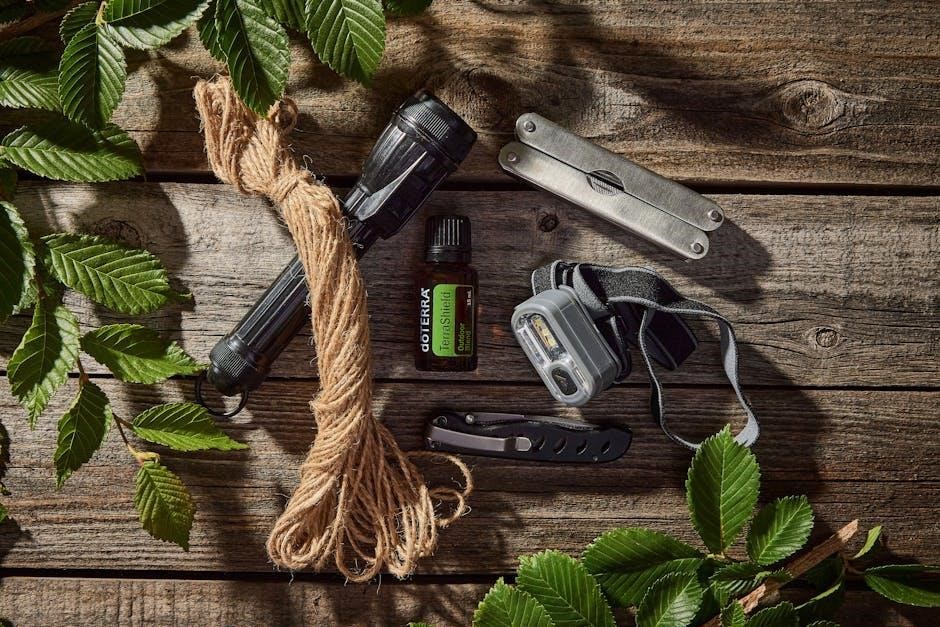
Headlamp or Flashlight
A reliable light source is vital for navigating trails after dark, setting up camp, and signaling for help․ Choose one with adjustable brightness, long battery life, and water resistance for durability․
Why Light Sources are Essential
A headlamp or flashlight is crucial for hiking as it provides visibility after dark, aiding in trail navigation, camp setup, and signaling for help․ Natural light fades quickly, especially in remote areas, making artificial light indispensable for safety and task completion․ It also enhances visibility of surroundings, reducing the risk of accidents or getting lost․ A reliable light source ensures hikers can function effectively during early mornings, late evenings, or in low-light conditions, making it a vital component of any hiking kit for safety and convenience․
Choosing the Best Light for Hiking
When selecting a light source for hiking, prioritize LED options for durability and energy efficiency․ Opt for a headlamp with a red light mode to preserve night vision․ Ensure it has a long battery life or a USB-rechargeable option for convenience; Adjustable brightness settings and water resistance are key features․ A hands-free design, like a headlamp, is ideal for trail navigation and camp tasks․ Consider brands known for reliability and durability to ensure your light performs in various conditions․ Always carry extra batteries as a backup for extended trips․
Backup Light Sources
Always carry extra batteries for your headlamp or flashlight to avoid sudden darkness․ Consider a secondary light source, like a small flashlight or glowstick, stored in an easy-to-reach pocket․ Ensure backup options are lightweight and reliable․ A backup light ensures safety during nighttime emergencies or extended hikes․ Check battery expiration dates and keep spares dry․ A portable charger can also recharge devices like headlamps․ Plan ahead to maintain visibility and confidence on the trail, especially during multi-day adventures or unpredictable weather conditions․

Emergency Shelter
Emergency shelter provides protection from harsh weather and wildlife․ Carry a lightweight tent, tarp, or emergency blanket․ These items offer quick refuge in unexpected conditions, ensuring safety and warmth․
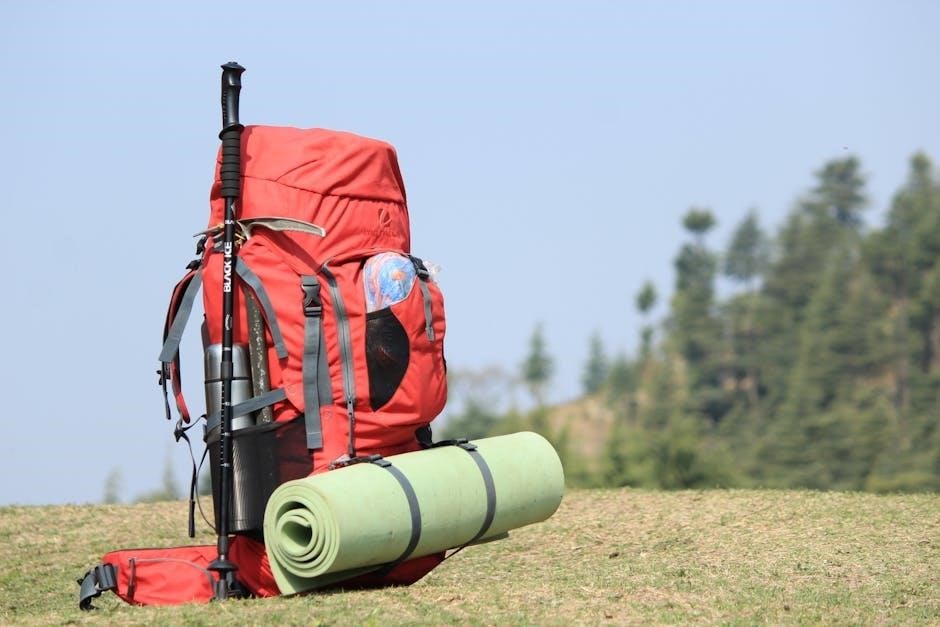
Understanding the Need for Shelter
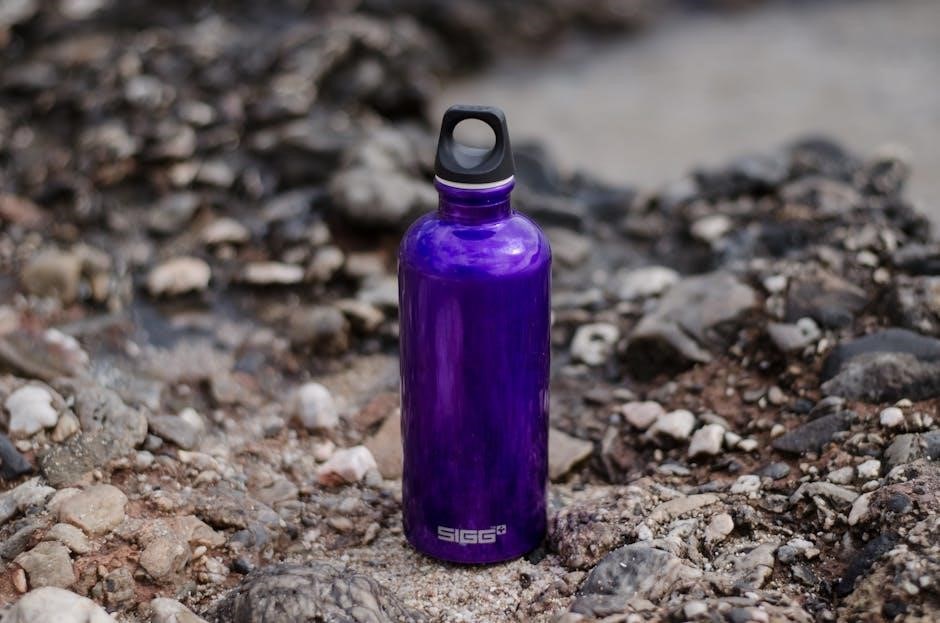
Shelter is vital for protecting against extreme weather, such as rain, wind, or snow, which can quickly lead to hypothermia․ It also provides a safe space from wildlife and harsh environmental conditions․ Even in mild weather, unexpected storms or injuries can make shelter crucial for survival․ Natural shelters like caves or tree overhangs can be used, but carrying a lightweight option ensures reliability․ A proper shelter helps maintain body heat and reduces stress, making it a cornerstone of safety in the wilderness․
Types of Emergency Shelters
Emergency shelters for hiking include lightweight tents, tarps, and bivy sacks․ Tents provide durable protection from wind and rain, while tarps are compact and versatile․ Bivy sacks are minimalist, offering basic cover for one person․ Natural shelters like snow trenches or lean-tos can also be constructed using surroundings․ Each type serves different needs, but all prioritize quick setup and reliability in harsh conditions․ Choosing the right shelter depends on weight, ease of use, and the environment you’re hiking in․
How to Set Up a Temporary Shelter
To set up a temporary shelter, start by selecting a flat, dry spot protected from wind and water․ Clear the area of debris and rocks․ If using a tent, stake it down securely with ropes and poles․ For a tarp shelter, tie the tarp between two sturdy trees using cordage․ Ensure the shelter is tightly anchored to withstand weather conditions․ Add insulation like leaves or a sleeping pad for warmth․ Practice setup beforehand to ensure efficiency during emergencies․
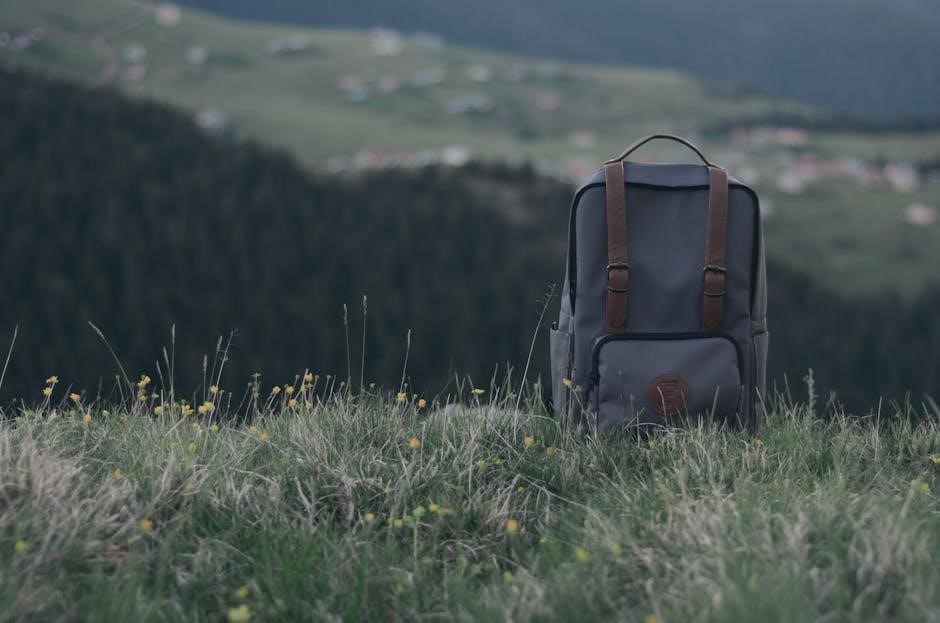
Fire Starters
Fire starters are crucial for warmth, cooking, and signaling․ Common tools include matches, lighters, and ferro rods․ Always carry backups and know how to use them safely․
Why Fire is Important for Survival
Fire is a lifesaver, providing warmth, light, and a way to cook food․ It helps prevent hypothermia, purifies water, and signals for help․ Fire also boosts morale and deters wildlife, making it a critical survival tool․
Best Fire Starters for Hiking
Reliable fire starters are crucial for survival․ Waterproof matches are a classic choice, while lighters offer convenience․ Ferro rods are durable and weather-resistant, making them popular among hikers․ Firestarters like dry tinder or firesteel can ignite flames even in damp conditions․ Always carry a backup to ensure you can start a fire in emergencies․ These tools are compact, lightweight, and essential for staying safe and warm on the trail․
Safety Tips for Building a Fire
Building a fire requires caution to prevent accidents․ Choose a safe location away from flammable materials and overhanging branches․ Clear the area of leaves and debris, and avoid windy conditions․ Keep water or sand nearby to extinguish the fire․ Never leave a fire unattended, and ensure it’s completely out before leaving․ Respect local fire bans and regulations․ Proper fire safety protects both you and the environment, ensuring a safe and enjoyable hiking experience․
Food and Snacks
Food and snacks are vital for energy and morale during hikes․ Pack lightweight, nutrient-rich options like trail mix, dried fruits, and protein bars․ Choose non-perishable items to ensure longevity and convenience on the trail․
Importance of Nutrition on the Trail
Nutrition is crucial for maintaining energy levels and preventing fatigue during hikes․ Proper food intake ensures sustained physical and mental performance, while poor nutrition can lead to exhaustion and decreased focus․ A balanced diet rich in carbohydrates, proteins, and fats provides the necessary fuel for navigating challenging terrains․ Additionally, staying nourished helps prevent hunger-related irritability and supports overall stamina, making it easier to enjoy the hike and respond to emergencies effectively․
Choosing the Right Hiking Snacks
When selecting hiking snacks, prioritize high-energy, lightweight, and non-perishable options․ Nuts, dried fruits, and jerky are excellent choices due to their nutrient density and durability․ Energy bars, trail mix, and whole grain crackers also provide sustained energy․ Consider snacks with a balance of carbohydrates, proteins, and fats to maintain stamina․ Additionally, opt for items that are easy to carry and won’t spoil quickly․ Always pack extras and tailor your choices to your dietary needs, ensuring variety to keep morale high during long treks․
How to Pack and Store Food
Pack food in airtight, waterproof containers to protect against moisture and pests․ Organize meals by day to simplify rationing․ Repackage snacks into smaller portions and store them in labeled bags․ Keep heavier food items at the bottom of your backpack for balance․ At camp, store food in sealed containers or use bear canisters to avoid attracting wildlife․ Hang food bags in trees if necessary․ Always check local regulations for food storage requirements to ensure safety and environmental compliance during your hike․
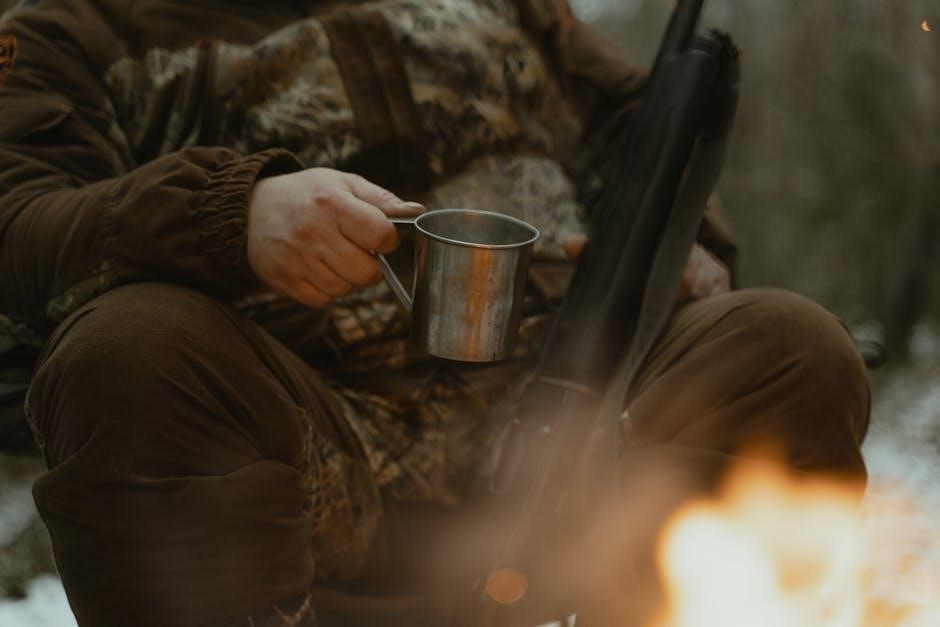
Multi-Purpose Tool
A multi-purpose tool is a must-have for hiking, offering versatility with features like pliers, scissors, and knives․ Compact and lightweight, it aids in repairs, cutting, and emergencies, ensuring preparedness on the trail․
Why a Multi-Tool is Indispensable
A multi-purpose tool is indispensable for hiking due to its versatility․ It combines pliers, scissors, a knife, and other functions in one compact device․ Lightweight and durable, it helps with trail repairs, cutting branches, and emergencies, eliminating the need for multiple tools․ Its adaptability ensures hikers can handle unexpected situations efficiently, making it a crucial item for safety and convenience on the trail, enhancing overall preparedness without adding bulk to the backpack․
Features to Look for in a Multi-Tool
When selecting a multi-tool for hiking, prioritize durability, lightweight design, and practical features․ Look for stainless steel construction for corrosion resistance․ Ergonomic grips improve handling, while essential functions like pliers, knife, screwdriver, and bottle opener are must-haves․ Additional features such as a built-in flashlight, fire starter, or wire cutter can enhance versatility․ Ensure the tool has a secure locking mechanism for safety and includes a carrying case or clip for easy access․ These features ensure reliability and convenience on the trail․
Common Uses on the Trail
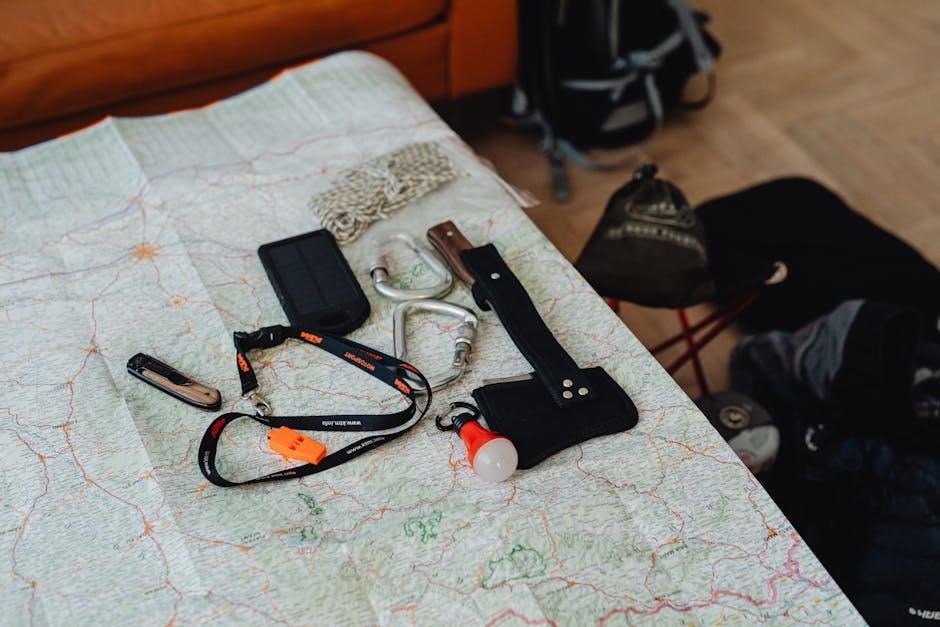
A multi-tool is invaluable for various tasks on the trail, such as cutting branches, tightening gear, or opening cans․ Its knife blade can whittle wood for kindling, while pliers help repair equipment․ The screwdriver feature is perfect for adjusting hiking poles or backpack frames․ Some tools also include a pry bar for lifting rocks or sticks, and wire cutters for repairing fences or gear․ With a multi-tool, you can slice rope for shelter, trim clothing, or even fix a broken zipper, making it an indispensable hiking companion․
Sun and Weather Protection
Protecting yourself from harsh sunlight and unpredictable weather is crucial for a safe hike․ Sunscreen, hats, and sunglasses prevent sunburn, while lightweight rain jackets and breathable layers shield against rain and wind; Always monitor weather conditions and adjust your gear accordingly to stay comfortable and avoid exposure․
Protecting Yourself from the Sun
Protecting yourself from the sun is vital during hikes․ Always apply broadband sunscreen with at least SPF 30 and reapply every two hours, especially after sweating or swimming․ Wear a wide-brimmed hat to cover your face, neck, and ears․ Use polarized sunglasses to reduce glare and protect your eyes․ Don’t forget lip balm with SPF to prevent chapped lips․ Consider UPF-rated clothing for extra protection against harmful UV rays․ These measures ensure a safer and more enjoyable hiking experience․
Understanding Weather Risks
Understanding weather risks is crucial for a safe hiking experience․ Monitor forecasts before heading out and stay alert to changing conditions․ Recognize signs of bad weather, such as darkening skies, increasing winds, or sudden temperature drops․ Carry gear like a rain jacket or emergency shelter to prepare for unexpected storms․ Avoid hiking during lightning storms and seek shelter immediately if one approaches․ Stay informed about local weather patterns and adjust your plans accordingly to ensure safety and enjoyment on the trail․
Essential Gear for Weather Protection
Essential gear for weather protection includes a waterproof jacket with a hood, breathable base layers, and insulating fleece or synthetic down․ A brimmed hat and gloves or mittens are vital for cold conditions․ Waterproof pants can be worn in heavy rain․ Consider a tarp or emergency blanket for unexpected shelter․ Gaiters and waterproof socks protect legs and feet from moisture․ Don’t forget sunscreen, lip balm, and sunglasses for sun protection․ A lightweight backpack cover ensures your gear stays dry in wet conditions․
The 10 essentials form the foundation of a safe and enjoyable hiking experience․ Always prioritize safety, preparedness, and environmental awareness․ Use this checklist to ensure a secure adventure․
Summarizing the 10 Essentials
The 10 essentials are critical for a safe and enjoyable hiking experience․ Navigation tools, water, extra clothing, a first aid kit, light sources, emergency shelter, fire starters, food, a multi-purpose tool, and weather protection are the core items․ Each serves a vital role in ensuring preparedness for various scenarios, from minor injuries to unexpected weather changes․ Packing these items thoughtfully balances safety, comfort, and environmental awareness, helping hikers respond to challenges confidently and responsibly․
Creating a Personalized Hiking Checklist
A personalized hiking checklist ensures you’re prepared for your specific adventure․ Start by listing the 10 essentials and tailor them to your hike’s duration, terrain, and weather․ Adjust quantities based on group size and trip length․ Double-check expiration dates for items like batteries and medications․ Add personal touches like trekking poles or a camera․ Finally, review and adapt your checklist based on trail conditions and recent weather forecasts to ensure a safe and enjoyable experience․
Final Tips for a Safe and Enjoyable Hike
Always thoroughly plan your route and check the weather forecast beforehand․ Inform someone about your hiking plans, including your expected return time․ Stay on marked trails to avoid getting lost and respect nature by leaving no trace․ Carry emergency contacts and know basic first aid․ Pack extra supplies like food, water, and layers for unpredictable conditions․ Stay alert, enjoy the scenery, and prioritize safety to ensure a memorable and stress-free hiking experience for everyone involved․
